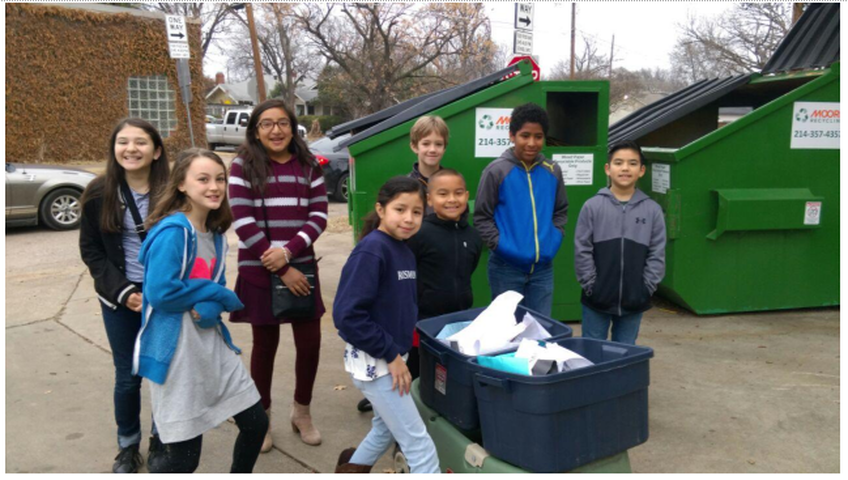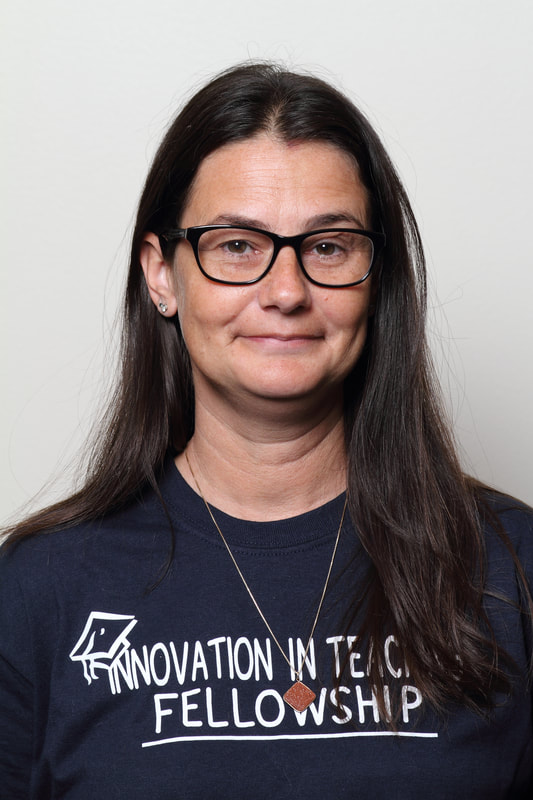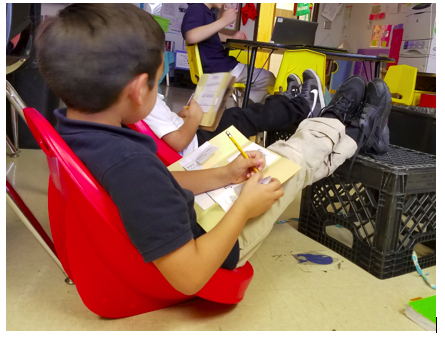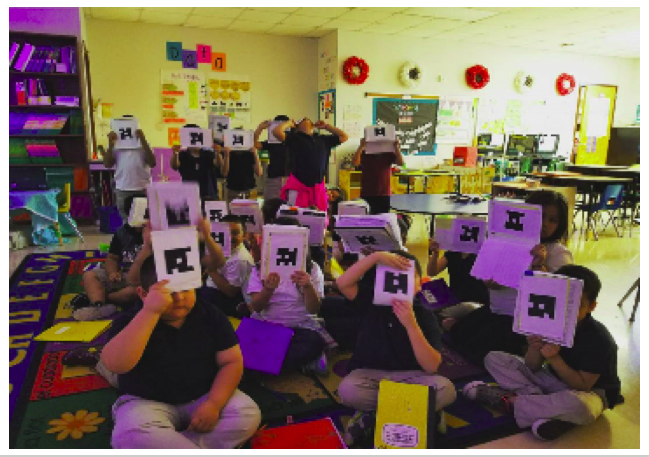|
In a world where so much injustice is being brought to light, how might we as educators and leaders, teach our students compassion and empathy? When writing an article for The New York Times, R.J. Palacio said, “The tricky part about teaching empathy to children, is that you can't really teach it. You can only inspire it.” Someone can’t think about how they are hurting others if they can't first practice empathy. I would argue that empathy is one of the most important skills we can instill in our students because with empathy our students hearts will be softer toward others and I believe that is where real change starts. This summer when reading, The End of Average by Todd Ross for the Innovation in Teaching Fellowship I renewed my passion for teaching the whole student, as they are, and not just the data and intellectual part of the student. Martin Luther King, Jr. said, “The function of education is to teach one to think intensively and to think critically. Intelligence plus character - that is the goal of true education.” After some honest reflection, I realized that the character part of learning was largely absent in my classroom. I asked myself, “If I can't teach empathy to my students, how can I inspire it?” I then set out this year to introduce books that would, hopefully, bring about empathy in an organic way. I realize that most people, adults even, do not know anything of life other than what we have experienced ourselves. This is an obstacle when it comes to compassion and empathy. We can’t understand things like prejudice, sexism, or abuse unless we have experienced it, so we can't truly “feel for” those who are currently experiencing these struggles, and isn’t feeling for others the definition of empathy? As a result of these revelations we started out our year reading Wonder by R.J. Palacio as a class. Some people might think reading aloud to 5th graders has no merit, but I find being able to start the year by sharing the experience and allowing them to hear a fluent reader and model how to think through and reason with the text invaluable. I specifically chose to share the book Wonder because its overarching theme is kindness and the main character is in 5th grade. I hoped this would solicit empathy toward their classmates. Through books, we can not only visit exotic places, but we can also get a peek into what our neighbor’s life is like day to day. Books allow us to experience things outside of our own “bubble” and I am constantly amazed at my 5th grade student’s ability to “put themselves in someone else's shoes” and see things in a new light. So, let's work together as educators, not only to raise a generation of empathetic, compassionate humans, but to open our own minds to other realities, and show empathy ourselves by diving into diverse literature today. Afterall, you can't teach empathy but you can inspire it.
2 Comments
Conversations around equity are difficult and at times, uncomfortable, but crucial to ensuring a learning experience is truly personalized. As shared in a recent blog post, The New and Improved PL Toolbox, including equity in the newest version of the tool was imperative and creating equity as its own domain was intentional. Over the past six months we’ve had a continuous conversation with teachers and school leaders about it equity looks like in a personalized learning classroom. From these conversations we identified teacher actions centered around bias, identity, access and expectations that would ultimately become the foundation of our 4 phases: Self-Awareness, Diversity in Design, Collaborative Grouping, and Access to Materials. Observing self-awareness in a 20 minute observation is not the same as observing routines and procedures. For this reason we are recommending that this domain be used as a reflective tool by teachers that promotes self-efficacy within to recognize implicit bias, push curriculum to represent the students who are engaged, and consider how learners are grouped and access materials. For coaching purposes, this domain can be used to guide conversations, set goals, and connect with colleagues in a safe way. To help you get started, here is a list of questions to guide self-reflections -
Want to go deeper, but not sure where to start? Here’s what is inspiring our team -
“Houston, we have a problem.” This quote is a daily reminder to me of what the crew of Apollo 13 experienced. Faced with possible death, they used their critical thinking skills and determination to defy all odds and they made it back home. Sometimes being in the classroom with a room full of students at all different levels seems like an impossible mission, not life threatening but difficult. James Lovell, the commander of Apollo 13 was quoted as saying “There are three types of people. There are people who make things happen, there are people who watch things happen, and there are people who wonder what happened. To be successful, you need to be a person who makes things happen.” The crew on Apollo 13 did not have the option to watch and wonder and neither do we as teachers. Every day that we get out of bed we do so with the intent to make something happen. The Innovation in Teaching Fellowship has helped me see that education is changing. Every fellows is a maker. We are changing the way education is being presented to the children. We are redesigning our classrooms and the way we deliver our lessons. No longer will students have to sit in rows and be fed their education. Through the introduction of personalized learning, students are now taking part in their learning. As part of this fellowship, I had the opportunity to visit schools in Colorado where I watched students working through their weekly goals. They were not in desks or in rows. They were at tables, on couches, bean bags, and the floor. They were reading, writing, working in small groups and on the computers. Their reward was not free time or extra recess. They were working hard so that they could work on their projects. Some students were working with the parks department to help plan a useful and fun design to the park near the school. Others were working on cutting down the energy use at the school or how to build a greenhouse for the school garden. Third graders had designed products, produced them, and partnered with a charity so that would benefit from the sale of their product. They had raised over $14,000 this school year already. Whether they were helping with the park or trying to save energy, these students were motivated. The atmosphere at these schools was different. Students almost seemed to be working side by side with their teachers. The maturity level of the students was also very impressive. These students are not just learning reading, math, science, and social studies. They were learning work ethic, time management and problem solving skills. They have seen someone make a difference and they know that they can also. That is where I have found myself. I have seen what is possible and I too want to make that happen. We need to make sure that our children know that they have the power to make a difference. They have the power to help guide their education. Education as we know it is changing and I don’t just want to watch it change. I don’t want to wonder when it changed. I want to be a part of making the change. My students are recycling. Not just in my classroom. They are making sure that the whole school is recycling. They learned about a problem, they asked questions, they now understand the problem, they have navigated a solution, they have created a plan, they have highlighted and fixed their plan, and they have launched their idea. They show up on my portable door twice a week in the mornings. Not on time but early, to do their part. There is no reward from me. They realize that they are part of something bigger and they want to be involved. This is where this program has gotten us. This is the innovation in teaching.
Have you ever tried to run a marathon? Well, learning and implementing Blended Learning is a lot like getting ready for a marathon. At first you tell yourself, “If other people can do this, so can I.” Then you begin training, educating yourself and before you know it you’re hitting the track, or in my case the classroom floor running. Yet, at some point you become overwhelmed thinking, “Can I really do this? Maybe I should go back to what I was doing before. It seemed to work and I was good at it!” Of course there are those days when you have to just splash the cold water in your face and recognize how far you’ve come and the impact that you’ve made. Before you know it you’re running that race and nothing can stop you. Let me tell you about my marathon. I joined Dallas ISD’s Innovation in Teaching Fellowship to recondition my mind. I knew very little about Blended Learning before I entered the fellowship, but I was eager to learn. Our first few days were filled with trainings and collaboration; I felt motivated! Then, the school year started. Think of the first day of school as my “starting line.” At first I said, “Pace yourself.” Although, that didn’t happen. I took off sprinting, implementing as much as I could from training within the first six weeks. Station rotation, playlist, choice homework, flex seating, and the 7 Habits. By the end of the third week of school, I was exhausted! This was all new to me and my students, and not to mention I was teaching a mixed-age group, for the first time. Eventually, I had to go back to the drawing board and redesign my approach and implementation. In other words, LAUNCH, using design thinking to boost creativity and bring out the maker in every student. This marathon now included my class; we would run a unique course together.
helped with classroom management and culture. Before, students struggled with transitions, valuable time was lost and everyone was frustrated. Now, students use a choice board that focuses on “Must Do’s, Can Do’s, and May Do’s” allowing for more fluid transitions. Throughout the journey, I’ve implemented other systems that didn’t work as well as others, however the most important lesson of it all was understanding the students’ misconceptions and listening to their feedback. Throughout this experience, I have been excited to teach, struggled to understand why things didn’t always work, innovative, felt stressed, overwhelmed, wanted to give up, became re- inspired, and most importantly, became transpired into a Blended Learning educator. Now, are you ready to start your marathon?
|
Brought to you by the Personalized Learning Department at the Dallas Independent School District.
Categories
All
Archives |

This work is licensed under a Creative Commons Attribution-NonCommercial-ShareAlike 4.0 International License.









 RSS Feed
RSS Feed
